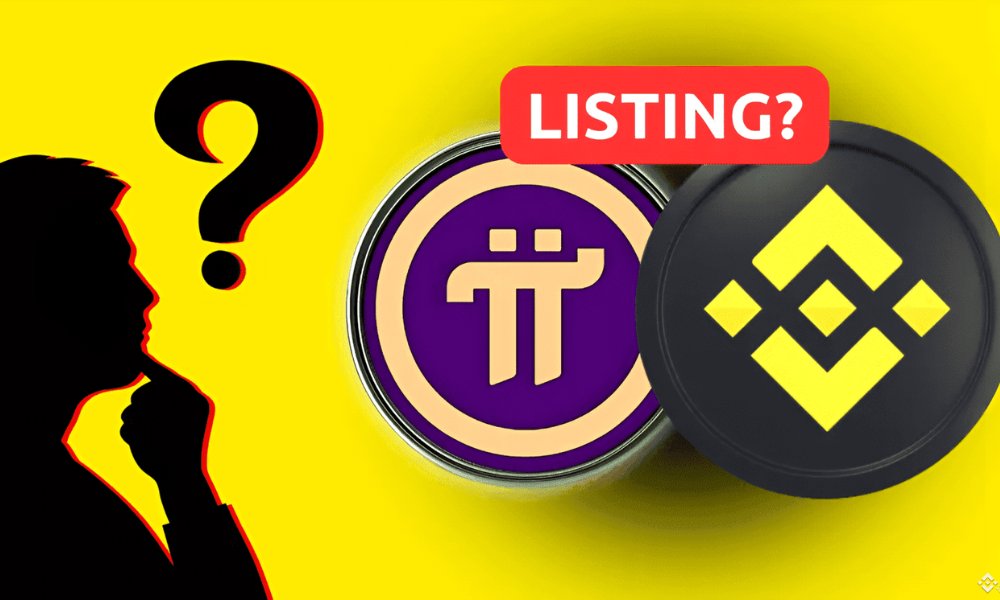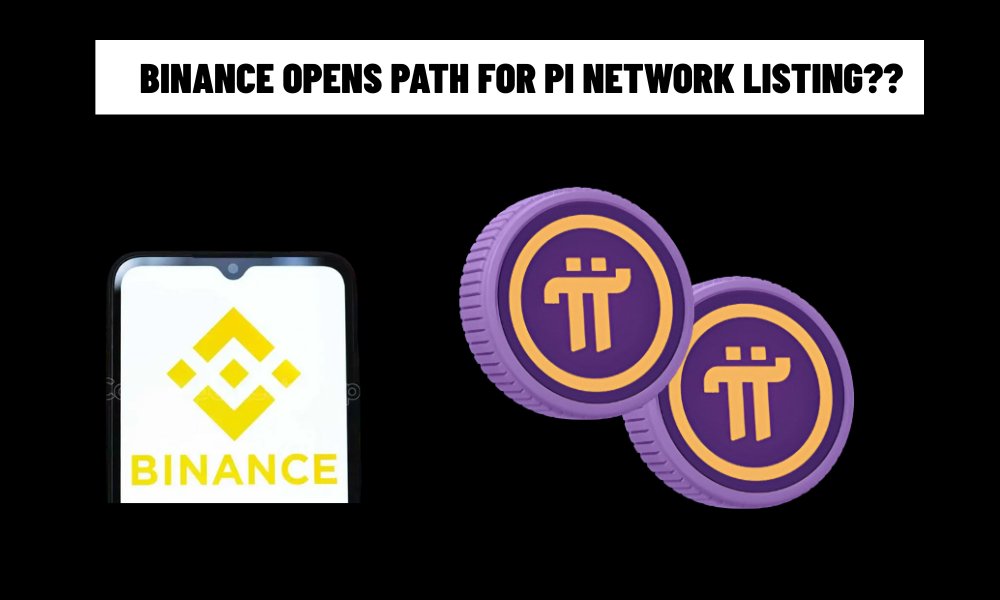On April 21, 2025, the cryptocurrency community buzzed with renewed optimism as Binance, the world’s largest crypto exchange, hinted at a potential listing of Pi Network’s native token, Pi Coin (PI). A cryptic post from Binance’s official X account, featuring a coin valued at $5,442.61 and bearing a striking resemblance to Pi’s logo, sparked widespread speculation.
Despite Binance’s silence on official confirmation, this development has reignited hopes for Pi Network, a controversial project with over 60 million users, which has struggled to gain traction on major exchanges. Here’s a comprehensive look at the situation, its implications, and the challenges Pi Network faces in securing a Binance listing.
Binance’s Tease: A Game-Changing Hint?
The catalyst for the excitement was a post on Binance’s X account, showcasing a coin with a price of $5,442.61—an unusually specific figure that some interpret as a nod to Pi’s mathematical significance (pi ≈ 3.14159). The coin’s design, resembling Pi’s logo, fueled speculation that Binance is preparing to list Pi Coin. Posts on X, such as one from @PiNetworkAlerts claiming Binance is “rumored to list $PI soon” with a potential price target of $3.14, amplified the hype. Another post from @NEWS_Pii boldly suggested Binance and Kraken could list Pi at $314,159, though such claims lack substantiation and appear speculative.

This isn’t the first time Binance has flirted with Pi Network. In February 2025, Binance launched a community voting campaign to gauge interest in listing Pi, garnering 86% support from nearly 900,000 participants. Despite this overwhelming backing, Binance clarified that the vote was non-binding, and any listing would depend on Pi meeting its stringent criteria, including transparency, decentralization, and mainnet functionality. The recent X post suggests Binance may be warming to Pi, possibly due to the project’s progress or community pressure.
Pi Network’s Journey: From Hype to Hurdles
Pi Network, launched in 2019, gained a massive following by allowing users to “mine” Pi Coins via smartphones, a low-energy alternative to traditional crypto mining. With over 60 million users globally, Pi boasts one of the largest crypto communities, with 3.7 million X followers, 2.9 million on Telegram, and 1.65 million on YouTube. Its vision of enabling real-world transactions through a decentralized ecosystem has resonated, particularly in emerging markets like Nigeria and Vietnam.
However, Pi Network has faced significant challenges:
-
Mainnet Delays and Centralization Concerns: Pi’s mainnet, launched on February 20, 2025, was initially closed, limiting external transactions and drawing criticism for lacking true decentralization. The core team controls 82.8% of the 100 billion token supply, with 62.8 billion Pi in six wallets and 20 billion in 10,000 unlisted wallets linked to the team. This concentration has raised doubts about Pi’s decentralized claims, with only 6.8 billion tokens circulating.
-
Regulatory and Transparency Issues: Binance and other exchanges have hesitated to list Pi due to concerns about its legal status and transparency. Allegations of operating like a multi-level marketing scheme, coupled with warnings from Chinese authorities, have tarnished its reputation. The project’s KYC process and data privacy policies, potentially involving AI systems like ChatGPT, have also sparked concerns.
-
Price Volatility: Pi’s price has been a rollercoaster, peaking at $3 in February 2025 but crashing to $0.47 by April, an 80% drop from its all-time high. At the time of writing, Pi trades at $0.47, with a market cap of $12.95 billion, ranking 12th on CoinGecko. The recent Binance buzz has yet to reverse this decline, with a 15% daily drop on April 4, 2025.
Why Binance’s Interest Matters
A Binance listing could be transformative for Pi Network. As the leading exchange with over 1,460 trading pairs and $31 billion in stablecoin reserves, Binance’s endorsement would:
-
Boost Liquidity and Price: Listings on major exchanges often trigger price surges due to increased trading volume. Analysts like GEM HUNTER predicted Pi could hit $5–$10 if listed in March 2025, though current market conditions suggest a more modest rally to $2–$3.
-
Enhance Credibility: Binance’s rigorous vetting process would signal Pi’s legitimacy, countering scam allegations and attracting institutional investors.
-
Drive Adoption: With Binance’s global user base, Pi could gain traction for real-world use cases, such as P2P transactions or tokenized assets, aligning with its vision of a decentralized economy.
The February 2025 vote, where 86% of 900,000 participants supported Pi’s listing, underscores the community’s enthusiasm. Other exchanges, including OKX, MEXC, Gate.io, and Bitget, listed Pi in February, validating its potential. However, Binance’s hesitation reflects concerns about Pi’s closed mainnet and centralized token distribution, which the project claims to be addressing.
Challenges to a Binance Listing
Despite the optimism, several obstacles remain:
-
Mainnet Functionality: Binance has stated that Pi must fully open its mainnet to enable public transactions. While Pi’s mainnet launched in February 2025, it remains partially closed, with transactions confined to its ecosystem. This limits interoperability, a key criterion for Binance listings.
-
Centralization Risks: The core team’s control over 82.8% of tokens raises red flags. Binance prioritizes decentralized projects, and Pi’s 43 nodes and three validators pale in comparison to Bitcoin (21,000 nodes) or Ethereum (6,600 nodes).
-
Regulatory Scrutiny: Binance’s own regulatory challenges, including a 2023 DOJ settlement and Gambaryan’s detention in Nigeria, make it cautious about listing controversial projects. Pi’s past regulatory warnings in China and unclear token allocation could deter Binance.
-
Market Sentiment: The broader crypto market’s volatility, with a $370 billion correction in February 2025, and Pi’s 40% weekly drop by April, signal investor caution. The Fear & Greed Index at 32 reflects bearish sentiment, potentially dampening a listing’s impact.
Posts on X, like one from @shrh56108161, express confidence that Binance will list Pi “at the right time,” but others, such as @PiNetwork24X7, tie Pi’s listing prospects to broader integrations like Chainlink, which remain unconfirmed. Speculative claims of a $314,159 price target are widely dismissed as unrealistic.

Market Context and Investor Outlook
Pi’s price struggles contrast with the broader market’s resilience. Bitcoin hovers above $84,000, and altcoins like Solana and Cardano have posted gains, driven by U.S. regulatory clarity and institutional adoption. Pi’s 60 million-strong community remains a key asset, but its failure to deliver real-world utility has fueled skepticism. Critics on X, like those cited in a March 2025 Blogtienao article, call Pi a “slow-motion collapse” built on “empty promises,” pointing to its low validator count and lack of exchange adoption.
Analysts suggest two scenarios for Pi:
-
Bullish Case: A Binance listing could push Pi to $2–$3, with a long-shot chance of reclaiming its $3 peak if market conditions improve. A CoinCodex prediction from March 2025 forecasted $1.83 by late March, indicating potential for recovery.
-
Bearish Case: Without a listing or significant upgrades, Pi could slide to $0.40, as predicted by analysts if it fails to hold $0.60 support. Token burns or reduced supply, proposed by some community members, could stabilize prices but require core team action.
What’s Next for Pi Network?
The Binance tease has revived hopes, but Pi Network’s path to listing remains uncertain. Key developments to watch include:
-
Mainnet Progress: Pi must fully open its mainnet to meet Binance’s transparency and interoperability standards.
-
Community Voting: Binance’s new listing mechanism, requiring just 0.01 BNB to vote, could pressure the exchange to act if community support persists.
-
Regulatory Clarity: Resolving concerns about token allocation and data privacy will be critical to gaining Binance’s trust.
-
Market Dynamics: A broader altcoin rally, potentially fueled by U.S. ETF approvals or stablecoin adoption, could amplify Pi’s listing impact.
For investors, caution is warranted. Pi’s 80% drop from its $3 peak and RSI of 29 (indicating oversold conditions) suggest a potential rebound, but the lack of official Binance confirmation keeps risks high. Users should monitor Binance Square for voting updates and official announcements, while avoiding speculative trades based on unverified X posts.
A Make-or-Break Moment
Binance’s hint at listing Pi Network has breathed new life into a project plagued by delays and skepticism. With a massive community and a unique mobile-mining model, Pi has the potential to disrupt the crypto space—if it can overcome its centralization and transparency challenges. A Binance listing would be a game-changer, boosting liquidity and credibility, but the road ahead is fraught with hurdles. As the crypto market awaits clarity, Pi Network stands at a crossroads, where strategic upgrades and regulatory alignment could determine whether it soars or fades into obscurity.
